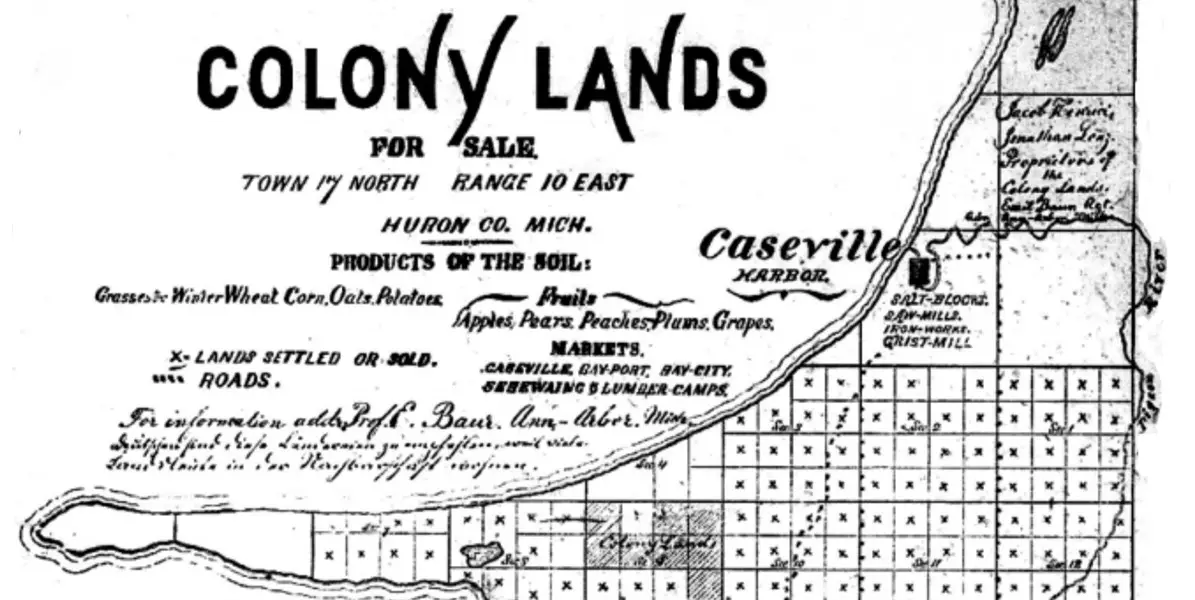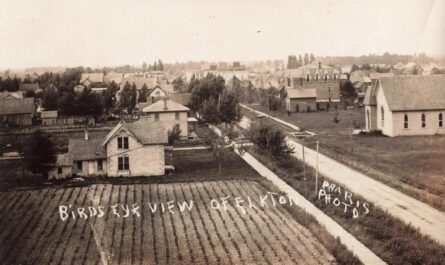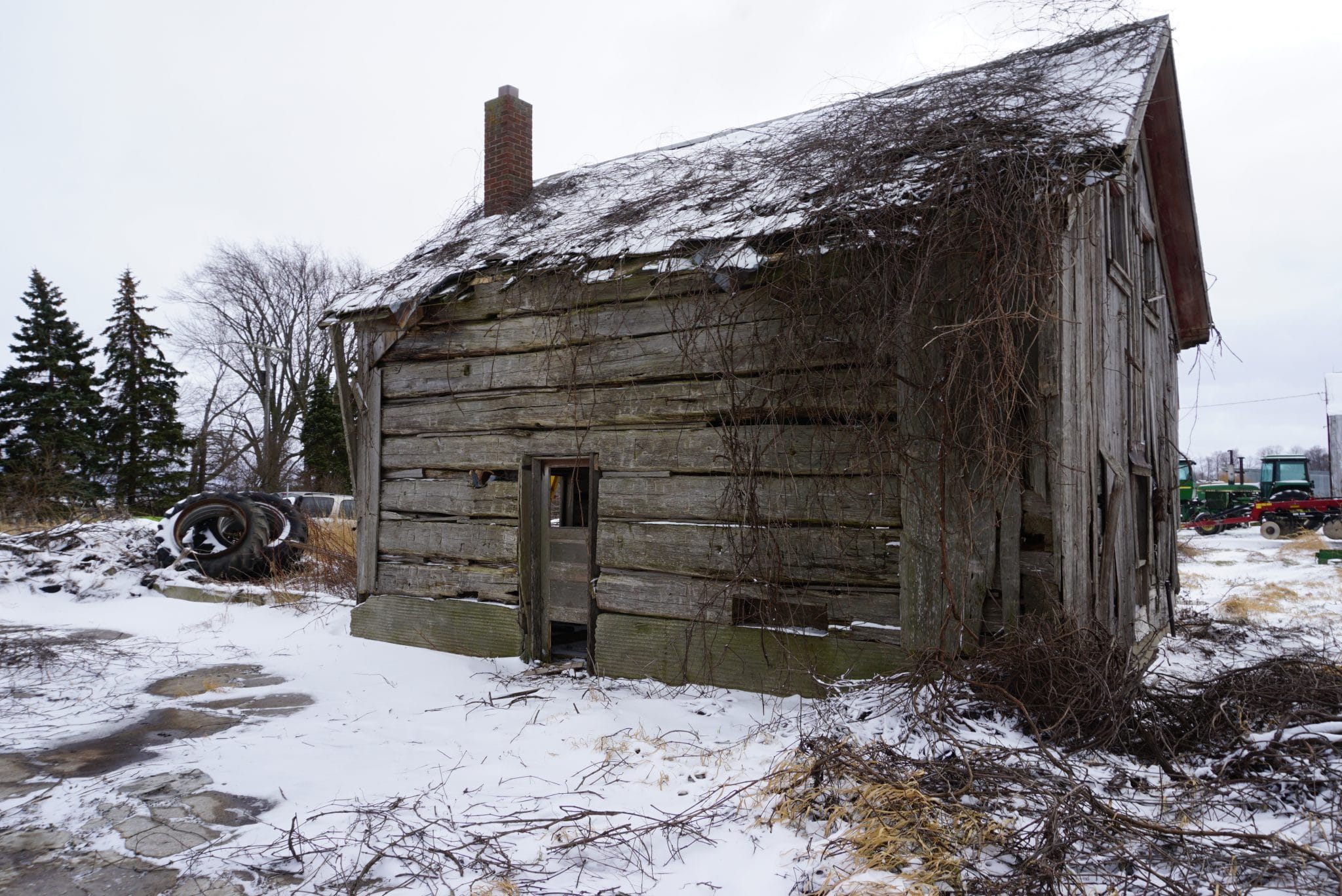The Spring of 1866 did not bring a warmth that Emil so desperately needed. Indeed, it seemed that divine providence was assailing against the small Colony just when the outlook should have brightened. The war had ended. Men had returned. However, the battle-hardened veterans were not standing by the Colony’s founder and the community was deep in debt and morale was low. What’s worse, Emil was convalescing. He had taken a nasty fall off a wagon in March, and by the first week of April, he was walking with the assistance of crutches. In correspondence, he said, “I could have lost both my legs.” In pain and torment for these responsibilities of the fledgling colony, he put pen to paper once again. He made a report and plea to his benefactor trustees at the Harmony Society in Economy, Pennsylvania.
The Colony Teeters on the Edge of Despair
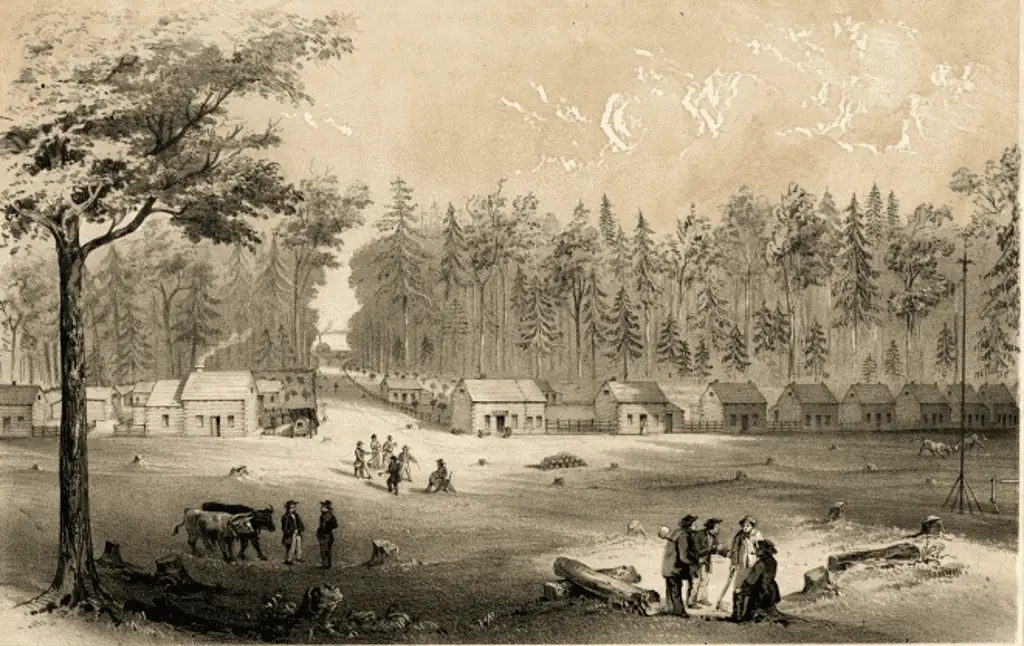
The rapid departure and vindictive actions of two of the former members of the Colony; Jacob Kolb and Louis Faul had really rattled Emil. Louis Faul had personally written to the postmaster general and the governor of Michigan, Henry Crapo, informing him of the financial state of the post office and of the progress of homesteading the Colony. This resulted in the loss of the Ora Labora Post Office to the nearby town of Sebewaing. In addition, Crapo took to reviewing the fitness of Ora Labora with the Board of Control which oversaw the homestead agreement.
The Michigan governor had the final authority and power to withdraw the land from the control of the Colony. It seems that the Colony had not yet taken final legal possession of the property closest to Wild Fowl Bay, where much of the improvements had been made. Emil desperately needed money to buy the land where they constructed much of the small settlement. In his letter to the trustees, Emil noted that there are,
“15 houses, a large barn, and several stables. This piece is worth thousands of dollars, especially in the future.”
Without this foundational control of the core part of their settlement, all the Colony’s labor and efforts could have been doomed.
Emil finished his April letter to the Harmony trustees with yet another hopeful scheme for saving the Colony. He had been in contact with a preacher in Dayton Ohio named William Ahrens. Ahrens was an elder in the German Methodist Church in Dayton. Emil was optimistic that Ahrens would assist the Colony in selling the land of the Colony to new buyers, and there were also hints of setting up an “asylum for the aged.” This letter was the proverbial “last chance” for the Colony. During the prior November’s correspondence exchange with the trustees, it was made clear that they would not support any further bailouts of Ora Labora. Therefore Emil was looking elsewhere for assistance.
The Harmony Trustees Inquire About Their Land Title

Emils report must have concerned the trustees. Within days the elders in Harmony immediately reach out to their land office banking representative in East Saginaw, C. K. Robinson, for clarification on the title. In response, Robinson indicated while the title is sound, there is still a discrepancy amounting to $330. This difference for the conversion of “warrants” for the homestead acreage. The trustees in Harmony quickly pay this small sum. They write back to Emil in May, asking that Emil offer yet another promissory note to them to add the amount to the overall mortgage. They close their correspondence with the following foreboding advice:
“What kind of further loaning of money exists? So, we feel by consideration of our duties as Trustees really no freedom to do anything further, because we firmly believe, that your society is in a condition to help itself, provided that it is set up together out of the correct components.”
It was clear that no more funding would be forthcoming.
The Use of Warrants to Acquire Colony Land
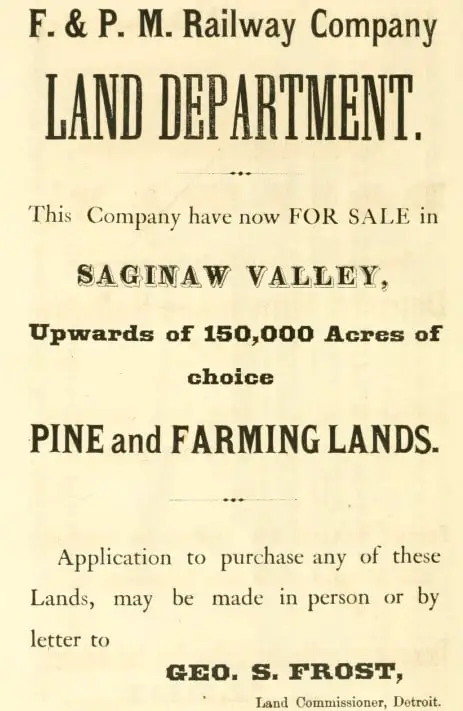
During the War of 1812, Congress provided for noncommissioned officers and soldiers serving for five years (or until discharged), would be entitled to 160 acres of land from the public domain in limited compensation for their military service. These warrants could be passed down to their heirs. As a result, over 6 million acres of land in the Territories of Michigan, Illinois, and Louisiana were set aside for land warrants. Based on letters between the East Saginaw attorney and the elders in Economy, 11 of these warrants were redeemed for a total of 1,700 acres at Ora Labora. Indeed, some of the members of the Colony contributed their warrants using this instead of the $25 initiation fee.
Emil Baur Hits the Fund-Raising Circuit

Despite being a young husband, father, and spiritual leader Emil feels committed to trying to restore the fledgling colony on the shore of Saginaw Bay. His next letter in June of 1866 is from Detroit. His comments remark positive news during fundraising.
“I have been here for a while in order to collect money so that our businesses are able to operate better and am finding among the English-speaking public quite good acceptance. I would really prefer to be out cutting wood with an ax than doing my present activity, although no one here has treated me other than friendly and politely.”
As bright and cheery as this sounds, this looks to be the last positive utterance of the young missionary in the relatively civilized area among the relatively wealthy residents of southeast Michigan. They were undoubtedly fascinated with the colonies’ story of survival on the shores of Wild Fowl Bay. The rest of the summer of 1866 would prove to be a different tale.
Emil’s Bout with Ague and Loss of a Key Associate
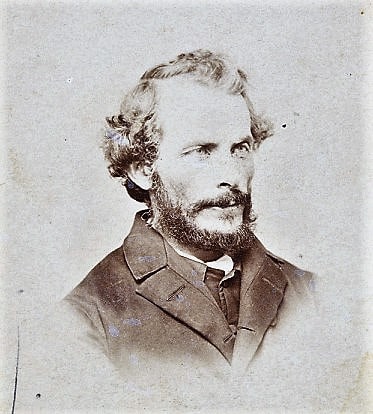
Heat fever, likely malaria, was a common ailment. It brought down even the healthiest individuals into a sweaty morose condition until it passed. This condition hit Emil hard during the July of 1866, right in the middle of a Colony fundraising tour around Detroit. He made another report to Harmony that he had received word that his most valued leader in the Colony, Brother Roedel, who had overseen the book-sales, the post-office, and other duties informed Emil on the 20th of July that he is firmly decided to leave the Colony. It was a devastating blow.
The resignation of a key leader in the Colony was only one item in the string of bad news. A vital piece of machinery, the shingle machine, was inoperable in the sawmill, and the tannery was out of commission. Both produced items for cash in which to buy food and supplies. Emil also noted that some 80,000 board feet of lumber were still sitting on the dock unshipped. The last of the bad news was that he blamed on Louis Faul and Jacob Kolb for about $700 in debts in different stores.
The only good news was he had secured $500 in donations and they had enough fodder for the cattle. The new marble quarry, located about 3 miles from the Colony, was showing itself to be a success.
Physically ill and disheartened, Emil took to his in-laws’ home in the township of Sylvan west of his Ann Arbor home to recover and reflect on the next steps.
Emil Baur’s Recovery at Sylvan had a Transformative Effect
In Emil’s August letter to the trustees in Economy, he offered the following summary,
“I became sick on the 14th of July from heat-fever, which affected me because of the running-around in the terrible heat of the sun in Detroit, and since I had also given many speeches. I, therefore, took myself to the country to my dear in-laws, where I enjoyed better air and have become better enough that I could think of going the next day again and take up my collector’s cross anew.”
Sylvan township was and still is a popular rural lake community located just west of Chelsea, Michigan, and about 15 miles from Emil’s home in Ann Arbor. Convalescence with his in-laws and away from the “bad air” of the swampy Colony undoubtedly gave rise to Emil’s thoughts on his future in the Colony.
Emil Asks Harmony to Sell Ora Labora
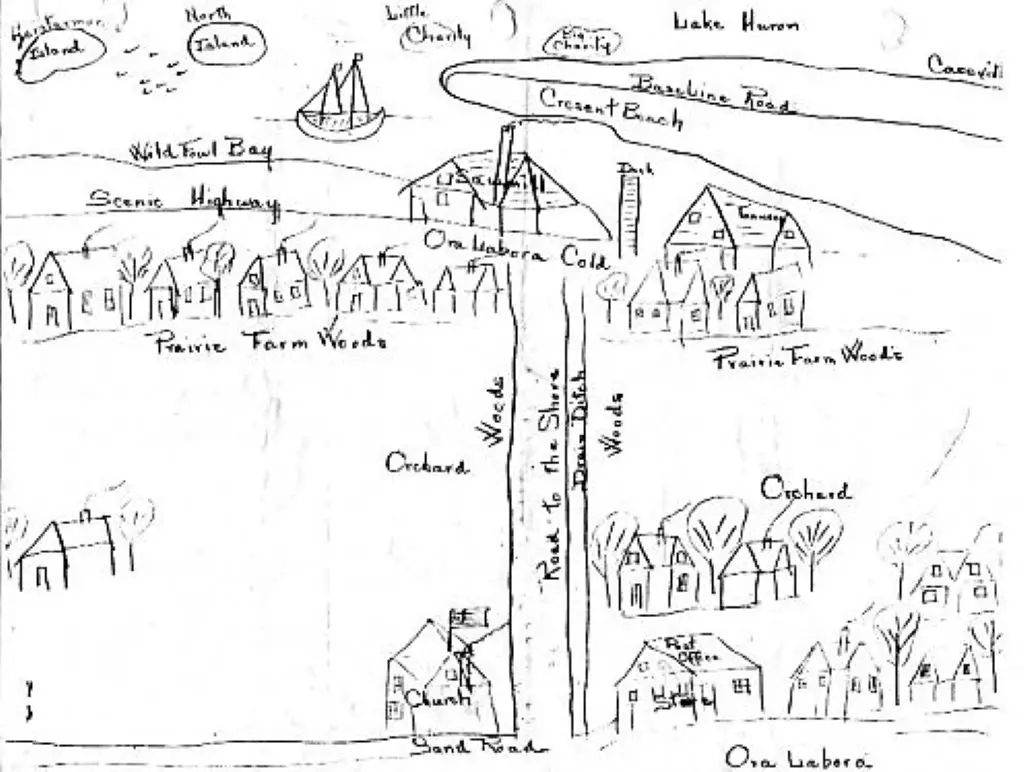
On the 5th of September Emil Baur wrote to the trustees that while he had recovered his health the Colony had not:
“I also caught the feverish ague, which this autumn is quite prevalent and has discouraged me for several years. Now I am better again, God is praised. Because we are missing the means to operate our businesses properly and to hire the correct people for our machines, and, because we also in the 3 years have learned a lot through experience, that the golden age, where one for all and all for one also in Weiter Form and, that the noble people like you are only a few standing there like oases in a human desert; indeed, I dare say in a Christian desert, so we have decided, if possible, to sell-out and most preferably, to be sure, to a stock-company of superior business people.”
This pivotal letter to his trustees must have come as a shock. Reading between the lines, Emil noted that though the Colony had learned a lot, it still didn’t have the skills and experience to be a success. He also hinted that his benefactors had stood idly by with their lack of support. Thus, it may be better to sell it off than to keep at it. It was a damning indictment of the trustees to leave the young man hanging in what was still the wilds of northern Michigan with little more than “thoughts and prayers.”
Ora Labora’s Members Plea For Help
A few days after Emil Baur’s letter arrived in Pennsylvania, Herman Roedel and 11 other colony members also ask Harmony for relief. They point out that much of the land they were given was unsuitable. The double work of clearing and then ditching the area to drain the water still wasn’t resulting in a suitable farming environment. They had no competent and skillful leadership. This, combined with the loss of so many members, made the cooperative management of a commune impossible.
Lastly, they feared that their individual efforts of clearing their own land, which had been distributed with a lottery among the members, would be lost as it was burdened with a mortgage. Each of the signatories asked for a single acre to help secure their future during old age. This 13th of September letter from 12 of the members is the final chapter on Ora Labora’s struggle to be a viable community. From this point, the lands of the Colony enter a new phase of transition from a commune to one of the largest real estate sales in the history of the Thumb.
Related Ora Labora 1866 Research Reading
Ora Labora – A Lost Colony In Michigan’s North – Part One – Ora Labora is known as the “Christian German Agricultural and Benevolent Society of Ora et Labora” (Pray and Work), where it’s parishioners could combine work with prayer, and live according to the Methodist Church Discipline. Founded in 1862.
Ora Labora – A Lost Colony in Michigan’s North – Part Two – Part II of the Ora Labora story outlines the summer of 1863. The building is rapid and progress exciting in Michigan’s north. But the looming effect of the Civil War is about to impact this fledgling German religious colony.
Ora Labora – A Lost Colony in Michigan’s North – Part Three – Part III of the Ora Labora story brings us to 1864. The rapid growth of the colony was costly and the society needs funds to grow. It was time for drastic measures. The raging war in the south was turning in the North’s favor.
Ora Labora – A Lost Colony in Michigan’s North – Part Four – Part IV of the Ora Labora start during Christmas 1864. The Colonies funds and provisions are low and its leader Emil Baur is begging his benefactors for loans to make it through the winter. With the war in its closing days, the colonist are hopeful.
Port Hopes Restored Train Depot – The eastern Thumb town of Port Hope has painstakingly restored a turn of the 1900’s railroad depot. It hosts a great collection of railway
Sources Consulted for Ora Labora 1866
- Ora Labora: Experiment in Communal Living, Caseville Historical Museum, Unpublished.
- Translated Letters of Ora Labora from Dr. Robert Conway. Private Collection.
- Ora Labora — A German Methodist Colony. Parts I & II, May 1982, Adrian College
- Nixon, “The Society of Separatists of Zoar,” Dissertation., p.162.
- Ohio History Journal – The Ohio Historical Quarterly p 136
- Transcription of Letters Written by Adam Harder. Transcribed by Howard Harder, a son of Frederick Zechariah Harder. Courtesy of Dave and Helen (Hutchins) Damouth
Discover more from Thumbwind
Subscribe to get the latest posts sent to your email.

